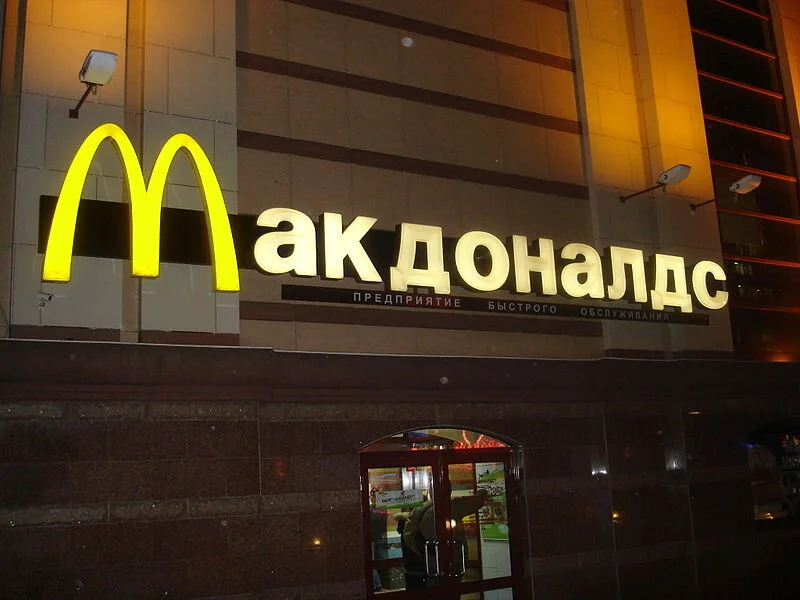Delectable Diplomacy: What is Culinary Diplomacy?
What is culinary diplomacy?
While there is no ‘official’ definition per say, culinary diplomacy is defined as a tool of diplomacy intended to foster cross-cultural understanding in the hopes of improving cooperation between states. Sam Chapple-Sokol, who frequently writes about food and diplomacy, has termed it commensality, which is a combination of two Latin words: com (with) and mensa (table). Because diplomacy is largely about convening parties for discussion, food is uniquely placed to do this job.
Indeed, the ‘state dinner’ is an often-used tool around the world for exactly that. Take, for example, the dinner hosted by President Trump during French President Emmanuel Macron’s first visit to the United States after Trump’s election. Fit for a king, diners ate a candle-lit meal off Clinton-era gold dishes. State dinners may not be as productive as international summits, but they are nonetheless a (delicious) tool of power projection and relationship building.
McDonalds Comes to Moscow
In the twilight of the Cold War, McDonalds opened their first location in Moscow’s Pushkinskaya Square. In its first day of operation, January 31, 1990, it set the record for most customers served on the first day, feeding 30,000 curious Russians. The location opened during the perestroika (literally ‘restructuring’) of the Soviet economy, which ushered in a spirit of change for the first time for the average Soviet citizen.
Rather than being met with the typical cold reception of the Soviet service sector, patrons were greeted with bright smiles and accommodating staff. To be sure, the staff were the very best of the Soviet youth: university educated, fluent in foreign languages, and essentially ‘westernized.’ The all-encompassing experience “offered a glimpse of what life (and eating out) was like over the Iron Curtain.” This singular glimpse solidified the Big Mac as perhaps the most famous example of culinary diplomacy and American influence in the Soviet Union.
On that day, the New York Times reported that that McDonalds was responsible for a great deal of debate about materialism and the cultural change that was gripping the Soviet Union at the time. Indeed, reporters noted that patrons departed with leftover refuse “to show they were pioneers.” They were not only pioneers within their own country, but – likely unknowing – pioneers in the field of global culinary diplomacy. Since then, this episode in Pushkinskaya Square has been held up as one of the most tangible examples of soft power projection in history.
‘Kimchi Diplomacy’
South Korea is recognized as one of the biggest users of culinary diplomacy, earning its own nickname ‘Kimchi Diplomacy.’ South Korea has funded a Kimchi bus and launched Kimchi into space, among many other initiatives. The Kimchi bus has travelled through Europe, Russia, North America, Japan, and Latin American promoting South Korean culture through the nation’s most famous export: Kimchi. As it travels, the bus stops almost anywhere – language schools, cultural events, and even sidewalks. When they stop, locals get a demonstration of kimjang, the process of how kimchi is made. Kimjang is so important to Korean culture both at home and abroad that it has been added to the UNESCO representative list of culture heritage.
South Korea’s ‘Kimchi Diplomacy’ doesn’t stop on Earth. In 2008, South Korea’s first astronaut, Soyeon Yi, launched into space with ten “essential” dishes, two of which were kimchi. On the journey, she remarked that “having kimchi in space…it makes you feel emotionally supported.” That sense of ‘home’ is oddly tangible and forms an important part of culinary diplomacy. Furthermore, kimchi rocketing into space shows the importance of the dish not only to South Koreans, but also its importance to South Korean diplomacy.
It goes both ways
Culinary diplomacy, by definition, is not confined to state to state interaction. Rather, it can be considered a method of education. For example, organization such as the Conflict Kitchen use culinary diplomacy to educate ‘ordinary people’ about international relations. The Conflict Kitchen serves dishes from states with which the United States is at war with.
In the past, they have served dishes from Afghanistan, Iran, and even Native American ‘tribes’ from around the country. Organizations such as this shows the power of food in the collective conscious as a tool of both education and influence. In their mission statement, the Conflict Kitchen writes that food is a conduit through which the general public can engage in discussions about cultures and peoples who are subject to “polarizing rhetoric” and “the narrow lens of media headlines.” This strikes at the heart of culinary diplomacy. While it is nonetheless form of power projection, it is also about connecting people to people.
We should remember that we engage in cultural diplomacy every day, whether it be hastily made midnight pasta or meticulously assembled sushi. At this university, it is likely that you have met people from around the world who bring their own culinary instinct with them. In short, culinary diplomacy is accessible and should be celebrated for the diversity, perspective, and surprise that it and we bring wherever and however we eat.
Image courtesy of Zac Allan via Wikimedia, © 2008, some rights reserved



